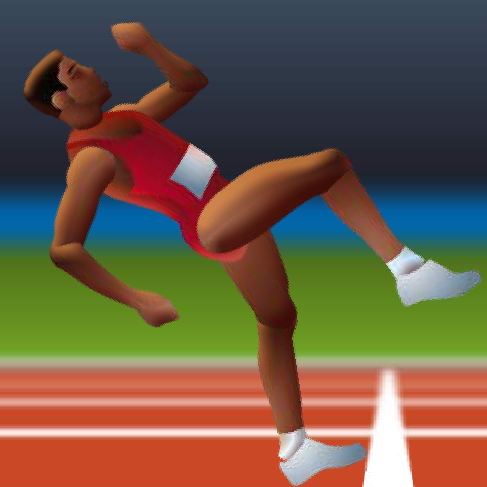You are here
Defamiliarized Keyboards and Embodied Writing
Primary tabs

Screenshot from QWOP
This assignment is geared toward getting students to begin thinking, talking, and writing about how writing is a deeply embodied practice. I ask students to play two games (QWOP and GIRP) that reconfigure how we engage the keyboard as a material object.
Reflection, Digital Literacy, Technology, Materiality
In this assignment I ask students to play two games, QWOP and GIRP, both can be found at foddy.net. Both games demand that the player engage the standard computer keyboard in strange ways. In QWOP the player controls the calves and thighs of a runner with four keys (Q,W, O,P), and in GIRP the player scales a cliff by pressing and holding keys in a Twister-like fashion.
Before we begin playing games I like to engage the class in a brief discussion about the various experiences that they have had with different writing tools. You can ask them about the mechanical aspects of learning how to write—big red pencils and pencil grips, left and right handedness, print and cursive, timed writings, touch typing, etc. The goal here is to begin students thinking about writing as a physical, embodied practice.
Next, introduce students to QWOP. I like having them jump right in without any exterior explanation or videos of successful runs. The key with QWOP is making sure that student’s engage it as a serious experience. It is worth spending a decent amount of time actually paying the game (roughly 10 minutes)—the general impulse is to try it several times (less than a minute with the game) and give up. For this assignment to work you really want your students to struggle.
After the first few minutes you can encourage your students to think about how their legs work. Have them move around in class, get them thinking about their bodies (legs and fingers both). At this point I like to show videos of successful playthroughs (easily found on youtube). Have them play until you are satisfied with their effort.
Next, start up GIRP. It is less confusing that QWOP, and I have found that students take to it somewhat more readily, so an instructional video isn’t necessarily necessary. Have them play through GIRP in roughly the same manner that they went through QWOP (a serious engagement).
Once they have spent a fair amount of time thinking and playing and working with the games have your students immediately (prior to any organized discussion) write short reflections on their experiences with the games and writing as an embodied practice. Having them jump through these different keyboard uses and configurations quickly works well.
Once they have finished writing I like to give students the opportunity to discuss both games (and at this point it can be fun to have willing students show off their QWOP and GIRP skills for the class) and the relationship between the games and their fingers and the keyboard. Once both games have been discussed you can shift discussion back toward the more general topic of embodied writing that class began with. Ask your students to think specifically about how they have situated their writing practice in the past (where do they write? on what? when?). Guide them toward the notion that there is nothing natural about any of our writing practices and that any rhetorical situation also includes the various writing technologies we engage.
Be sure to play QWOP and GIRP with as much seriousness as you expect from your students before you begin the lesson.
Since this is an in-class assignment you can follow the above description. Here are the key activities.
- Discuss writing as a material, embodied practice
- Play QWOP - Move, think about how your legs work
- Play GIRP -Move, think both about the odd finger configurations the game demands and standard touch typing.
- Write a short reflection about your experiences with both games and writing more broadly.
- Discuss the games and the relationships we have with writing, our bodies, and writing tools.
I generally have students upload their short reflections to their course blogs.
The key to this assignment is having students take the games seriously. It is incredibly easy to play for a minute than give up. You really need to work at getting your students engaged with the game (having them move and think about their bodies and the game and the keyboard works well). In general I have found that students readily engage in discussion about this topic—especially when it comes to relating how they learned to write. In the end it is worth remembering that the goal of the lesson is to begin thinking about writing differently rather than to beat QWOP and GIRP.
This assignment works in both early, general rhetoric/composition courses and in rhetoric courses geared toward more specific topic (video games, digital media, technology).
-

- Log in to post comments

